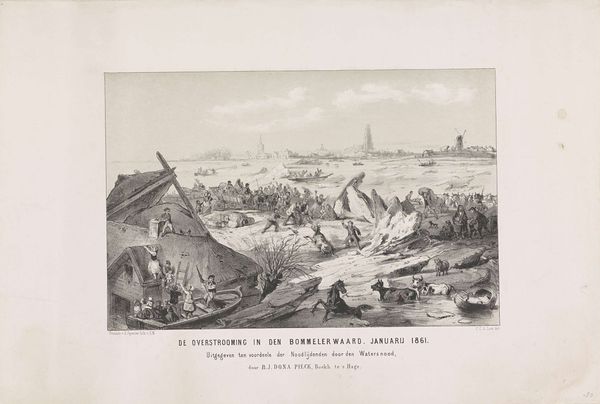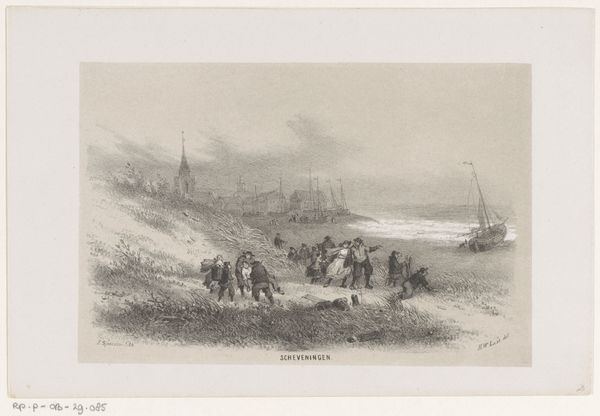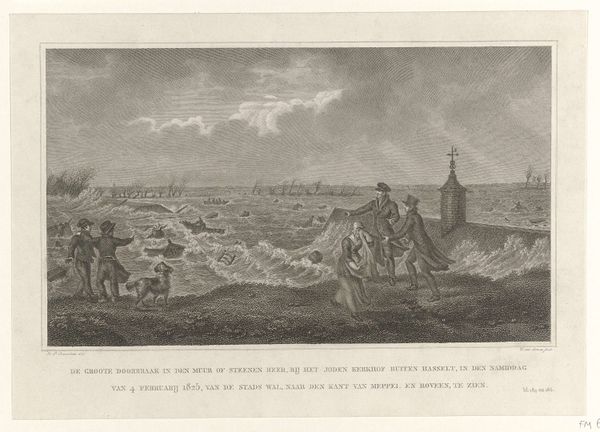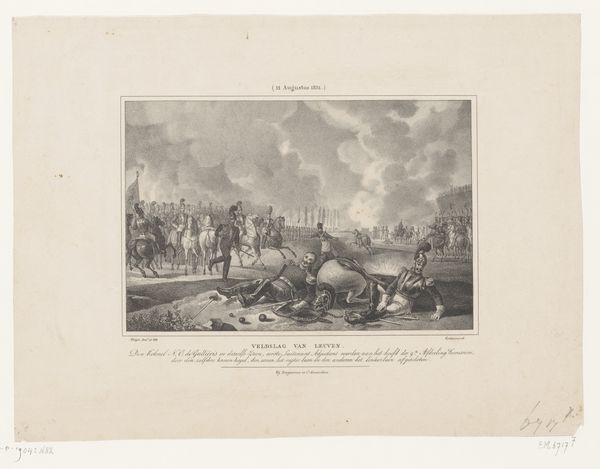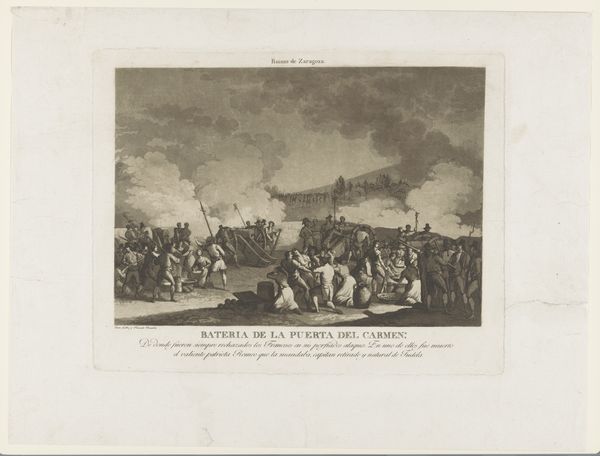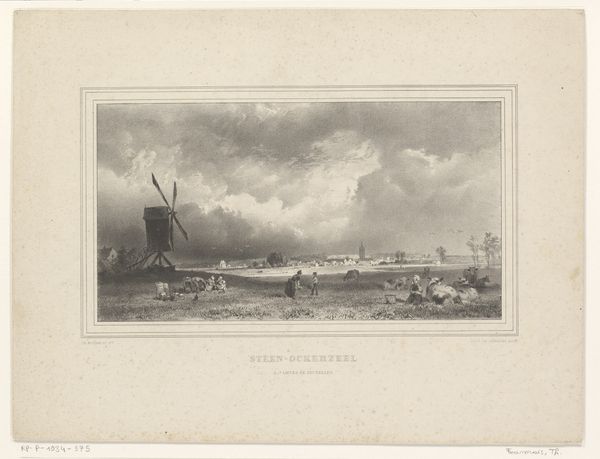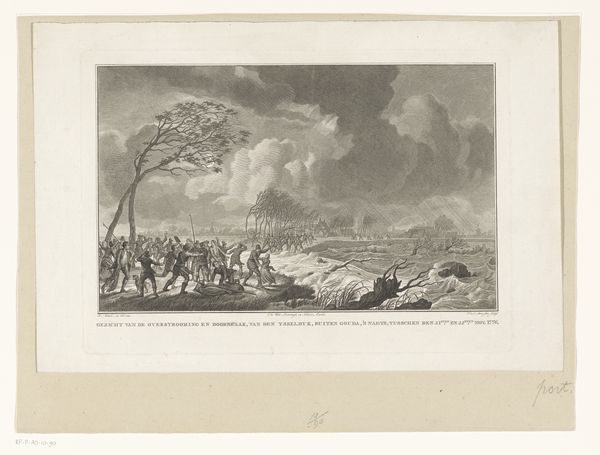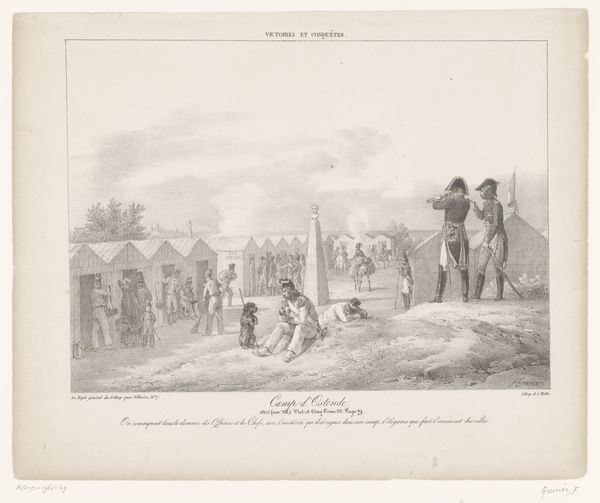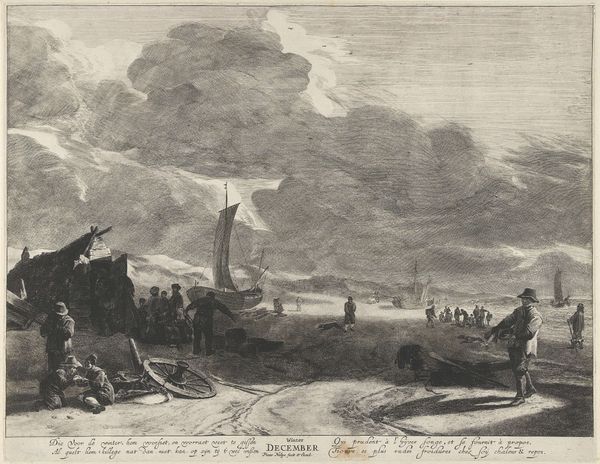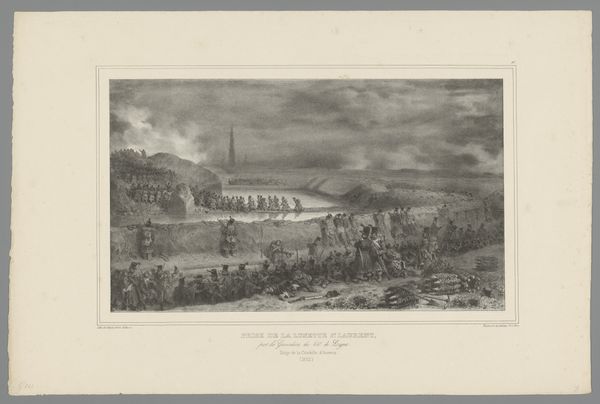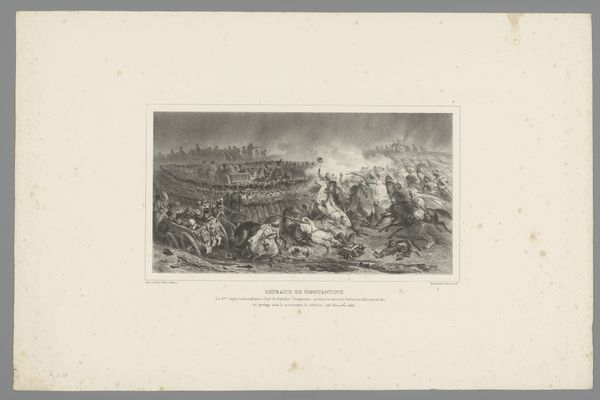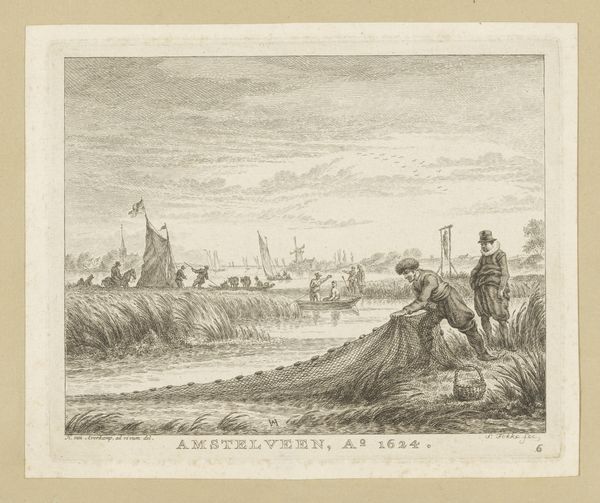
print, engraving
#
narrative-art
# print
#
war
#
old engraving style
#
romanticism
#
history-painting
#
engraving
Dimensions: height 318 mm, width 392 mm
Copyright: Rijks Museum: Open Domain
Editor: So, this is "Augustina de Aragón in Zaragoza," created sometime between 1808 and 1814 by Juan Galvez. It's an engraving, a print. It really captures a chaotic and almost romanticized scene of war. What historical context informs your reading of this piece? Curator: This print is powerful, isn't it? The image, as you said, romanticizes war, but more specifically, it contributes to the mythologizing of Agustina de Aragón. She became a national hero during the Peninsular War, a symbol of Spanish resistance against Napoleon's invasion. These types of prints served a crucial public function at the time. How do you think such images impacted public sentiment and shaped historical narratives? Editor: Well, seeing her so defiant amidst the chaos likely fueled patriotic feelings. But it also makes me wonder about the potential for manipulation. Were these images purely documentary, or were they designed to promote a specific political agenda? Curator: Absolutely, images are rarely neutral. These engravings circulated widely, bolstering morale and encouraging continued resistance against French occupation. The romantic style further amplifies this effect. Can you identify any specific stylistic elements of romanticism in this engraving that contribute to this effect? Editor: I see the heightened drama, the intense emotions in the figures' expressions, and this almost sublime feeling evoked by the scene of war. I'd say the ruins in the backdrop also fit into a Romantic vision of history. Curator: Exactly. The strategic placement of "Ruinas de Zaragoza" right on the top serves a visual reminder of sacrifice and loss, which could serve as an incentive for those looking to seek vengeance, no? Galvez effectively uses the romantic idiom to build a compelling narrative around Augustina, a figure who already resonated strongly with the public. Editor: I never thought about prints being so important for constructing public narratives during wartime. Curator: And this piece shows how art shapes public perception and impacts historical narratives. A new perspective is always worthwhile, isn't it?
Comments
No comments
Be the first to comment and join the conversation on the ultimate creative platform.
